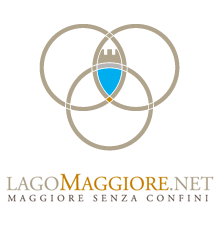
- ROCCHE, CASTELLI, FORTIFICAZIONI
- CHIESE, SANTUARI, LUOGHI E PERCORSI SACRI
Invorio
Invorio is a municipality in the Novara area also known under the name Porta del Vergante as it’s the natural point of access to the Vergante area for those arriving from Novara, a hilly route on the slopes dividing Lake Maggiore from Lake Orta, at Arona. This unique geographical position ensured it an important economic and strategic role in the past as demonstrated by the castle, which can still be seen today.
History of Invorio
Several sporadic finds (tombs, a coin treasure, a funeral epigraph) are proof of the presence of man in the Roman period. The castrum (castle) must have been rather important in the Middle Ages because numerous references to Invorio are made in documents in the 10th century. In 989, Gotefredo, vassal of the bishop of Novara, owned land here which was then donated to the monks in S. Giulio Basilica in Orta in 1039.
Invorio was controlled by the Counts of Biandrate in the 13th century. They transferred it to Novara at the beginning of the 14th century, who didn’t keep it for long due to the expansion of the Visconti who, perhaps from the local Longobardic stock, had settled in the lower Verbano and Vergante areas. After being conquered by the Milanese, the Visconti consolidated their dominions in the vicinity of Lake Maggiore and the bordering area of Vergante.
Tourism in Invorio
The most well-preserved part of the castle - which probably existed before the year 1000 - is the Torre Viscontea (Visconti tower). The pride of people from Invorio and symbol of the city, the tower rises in the middle of town and has survived the destruction of the complex (between 1356-1358).
The portico and elegant windows on Invorio’s Town Hall are to be admired. It was built in 1876 based on a project by local architect Giovanni Curioni.
Not far away are the Church of SS. Pietro e Paolo, whose original nucleus dates back to the 1200's, and the Church of S. Marta, dating back to sometime around the 15th century.
Events and entertainment in Invorio
The woods occupying approximately 65% of Invorio’s territory are characterised by many chestnut groves, most of whose plant varieties were selected two or three centuries ago.
Several festivals are organised throughout the year, including the Festa della Fiora (Festival of Flower) held 1 May, when the young people in town make paper flowers. The festival is even mentioned in a document from 1493 and takes place close to Mount Barro.



